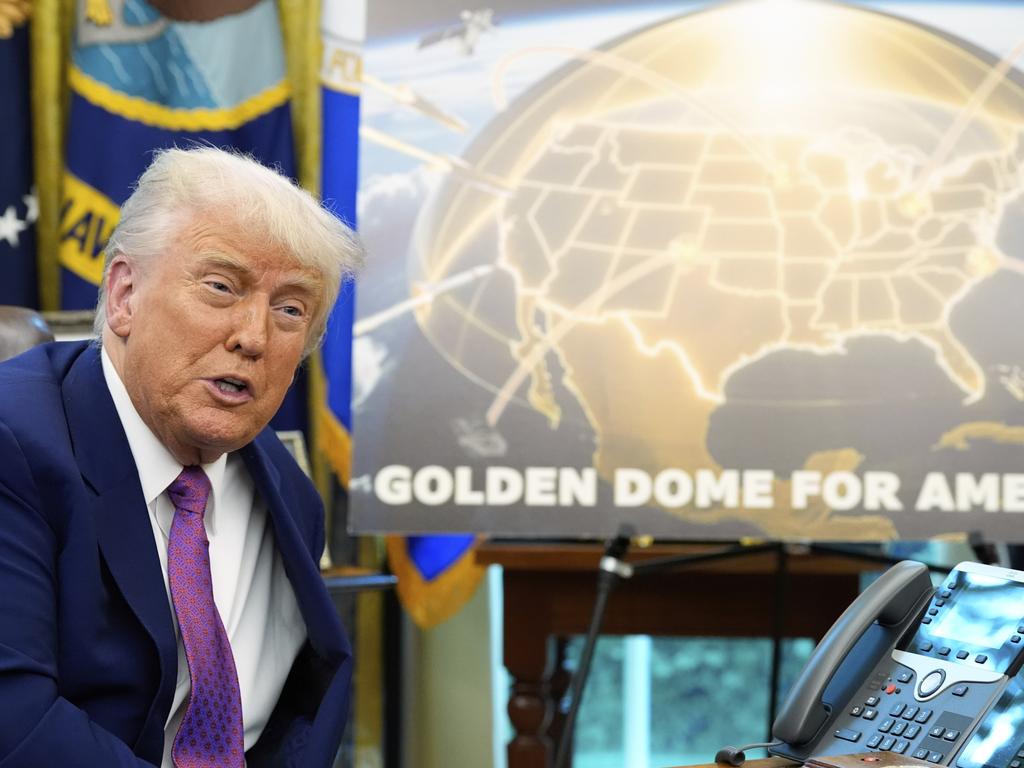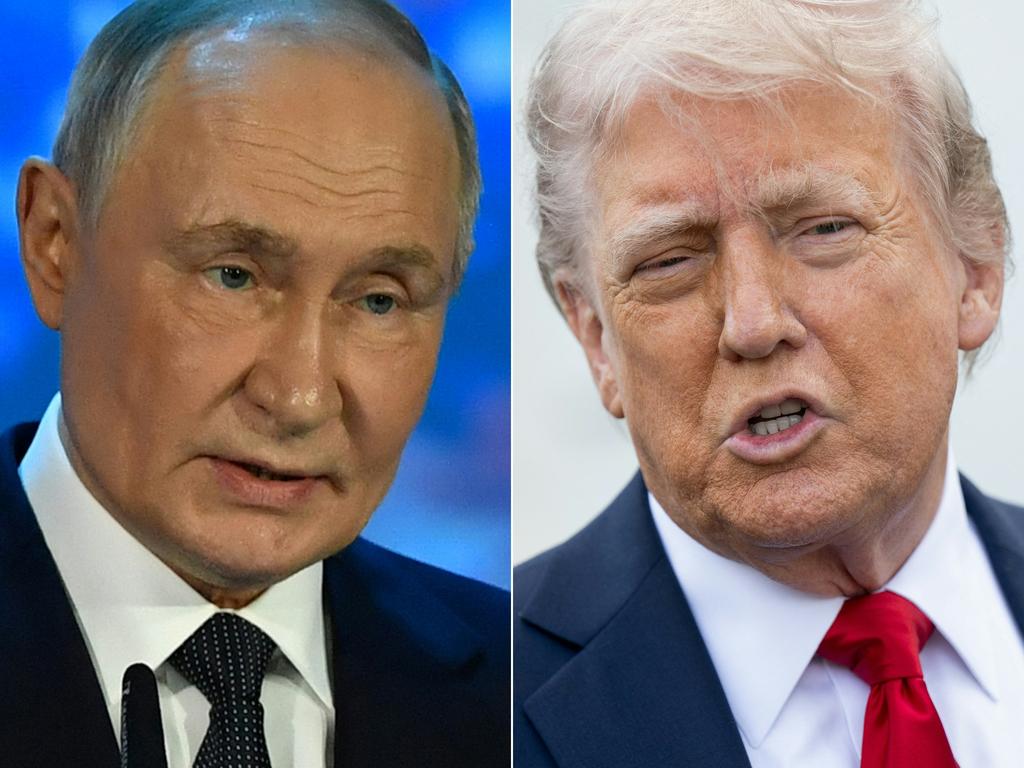Trump’s ‘Golden Dome’ riles nuclear-armed foes
China, Russia and North Korea, which harbour nuclear weapons that could reach US claim Trump’s defence shield endangers global stability.

President Trump’s “Golden Dome” plan has riled the three countries whose weapons technology poses the greatest threat to American territory, with China, Russia and North Korea claiming the missile-defence project is driving a dangerous new arms race.
Trump wants a Golden Dome shield in place by the end of his term, which would combine ground-based interceptors with satellites to guard US territory against hi-tech threats, including hypersonic missiles.
The Chinese, North Koreans and Russians are all developing such missiles, as well as new weapons intended to evade US defences and combat America in outer space. The three are also increasingly helping each other militarily.
North Korea slammed the Golden Dome on Tuesday as the “largest arms-build-up plan in history.” China and Russia in a joint statement earlier this month called the project “deeply destabilising.” Russian Foreign Ministry spokeswoman Maria Zakharova, in a briefing to journalists Tuesday, said the plan “represented a direct disruption to the foundations of strategic stability.”

All three countries have also denounced Trump’s call for space-based interceptors, saying they risk turning space into a battlefield.
Experts say that a potential risk of the Golden Dome is that a comprehensive defensive system encourages a proliferation of missiles, including nuclear-capable weapons. It comes as the last major nuclear treaty between leading nuclear powers Russia and the US is set to expire next year, potentially leading Moscow to accelerate the deployment of nuclear warheads.
“This missile-defence mirage gives you the illusion you can protect yourself but you’re driving all these countries to build all these hundreds and thousands of missiles so you end up in the worst of both worlds,” said Pavel Podvig, a senior researcher at the United Nations Institute for Disarmament Research.
The US says increasing threats make it necessary to build a more comprehensive missile-defence system and rejects criticism that the plan will militarise space.
“We have more recently observed China’s satellites engaging in what can only be described as dogfighting manoeuvres in space,” said Brig. Gen. Anthony Mastalir, the US Space Force commander in the Indo-Pacific, at a space conference in Australia on Tuesday. “These high-speed, combat-oriented operations on orbit serve as further evidence that Beijing is actively preparing to challenge the US and our allies in space.”

The Golden Dome plan represents a dramatic transformation in how the US aims to confront such threats.
The US says its missile defences are directed at so-called “rogue states,” primarily North Korea, which aren’t considered peer nuclear powers. Meanwhile, the US, Russia and China seek to prevent nuclear attack through deterrence.
Trump’s Golden Dome plan implicitly recognises that the arms-control era has passed and mutually assured destruction is no longer a sufficient deterrent to nuclear war.
The threats
A major emerging concern for US defence is hypersonic weapons, which can travel at least five times the speed of sound, fly low and manoeuvre before hitting a target, making them difficult to detect, let alone intercept.
In the hypersonic race, the US is behind. China, the leader, tested such a missile in 2021, which flew at speeds of more than 15,000 miles an hour as it circled the globe before striking a target in China.
In a sign of the Pentagon’s progress, the US military recently completed successful test flights of a reusable hypersonic rocket-powered aircraft.
When President Vladimir Putin first introduced Russia’s hypersonic weapons in 2018, an animated graphic showed a missile heading toward the West Coast of the US “Missile-defence systems are useless against them, absolutely pointless,” he said.
Russia’s hypersonic weapons could potentially be stopped by a system such as the proposed Golden Dome because they travel at much slower speeds during initial launch and before hitting their target, leaving them susceptible to interceptors, said David Wright at the Massachusetts Institute of Technology.
Intercepting Russia’s strategic intercontinental ballistic missiles could be much harder. At the first stage after launch, when a rocket pushes the missile up into — and out of — the atmosphere, an interceptor would have to be extremely close to respond to it in time.
That would mean covering the territory across all of Russia’s 11 time zones to intercept the missile in time, said Podvig.
“You need to have a lot of them so that some of them are close enough to every launch point,” he said.
North Korea already has a missile with the range to potentially strike the US — and leader Kim Jong-un wants more long-range weapons that can fly farther, carry bigger payloads and be deployed more quickly.
The country is pursuing hypersonic technology, underwater nuclear-armed drones and tactical weaponry, although military experts say they aren’t yet combat-ready.
The shield
The US installed dozens of ground-based interceptors in Alaska and California beginning in the early 2000s, and has tested interceptors fired by the Aegis combat system to shoot down intercontinental ballistic missiles, a system that was used successfully by navy destroyers against Iranian weapons targeting Israel last year. Land-based versions of the system have been installed in Romania and Poland.
The US also fields Patriot missile systems for shorter-range threats and the Terminal High Altitude Area Defence system, or Thaad, which is used for smaller areas including in South Korea and Guam.

Trump’s goal of seeing his Golden Dome shield in place in little more than three years would be difficult to accomplish, according to military experts.
Any missile-defence shield would likely only offer protection from about 85 per cent of incoming missiles, said Podvig. That could promote a false sense of security, while also spurring rivals to produce more weapons, he said.
Golden Dome plans for space-based interceptors have also raised concerns of a surge in space-based systems. A Congressional Budget Office assessment said that such a system for downing one or two missiles fired by a smaller adversary such as North Korea could require more than 1,000 interceptors.
To defend against Russia or China, with many more warheads, such a system would require potentially tens of thousands of satellites.
Russia and China view such space-based interceptors “as indistinguishable from offensive weapons, arguing that a better-protected United States might be emboldened to pursue more aggressive military actions,” said Tong Zhao, a senior fellow at the Carnegie Endowment for International Peace. “This heightens the risk of Russia and China intensifying their development of anti-satellite and other counter-space capabilities.”
China has been rapidly building its own nuclear forces. It has added some 350 missile silos and several bases for road-mobile launchers in recent years, according to a report led by Hans Kristensen, director of the Nuclear Information Project at the Federation of American Scientists.
Of China’s more than 700 launchers for land-based missiles that can carry nuclear warheads, 462 can be loaded with missiles capable of reaching the US, the report found.
China’s nuclear ballistic-missile submarines, the Type 094, are being equipped with a longer-range ballistic missile. A newer model, known as the Type 096, is now being developed to run more quietly than its predecessor. In 2019, China unveiled refit bombers with an air-launched ballistic missile that could potentially carry a nuclear warhead, the Pentagon said.
“It’s not driving up forces to the level that we saw in the early Cold War days — not yet,” said Kristensen. “But there’s no doubt that all of the factors that we can see at play, all the dynamics that are playing out in front of us, increasingly so, are the very ones that can create a nuclear arms race.”
Wall Street Journal





To join the conversation, please log in. Don't have an account? Register
Join the conversation, you are commenting as Logout